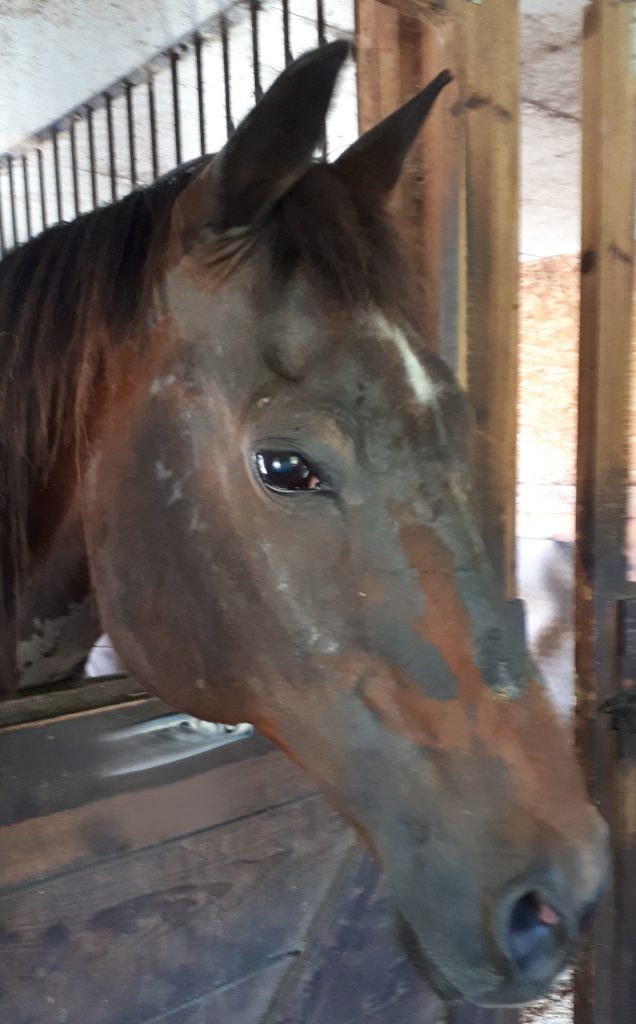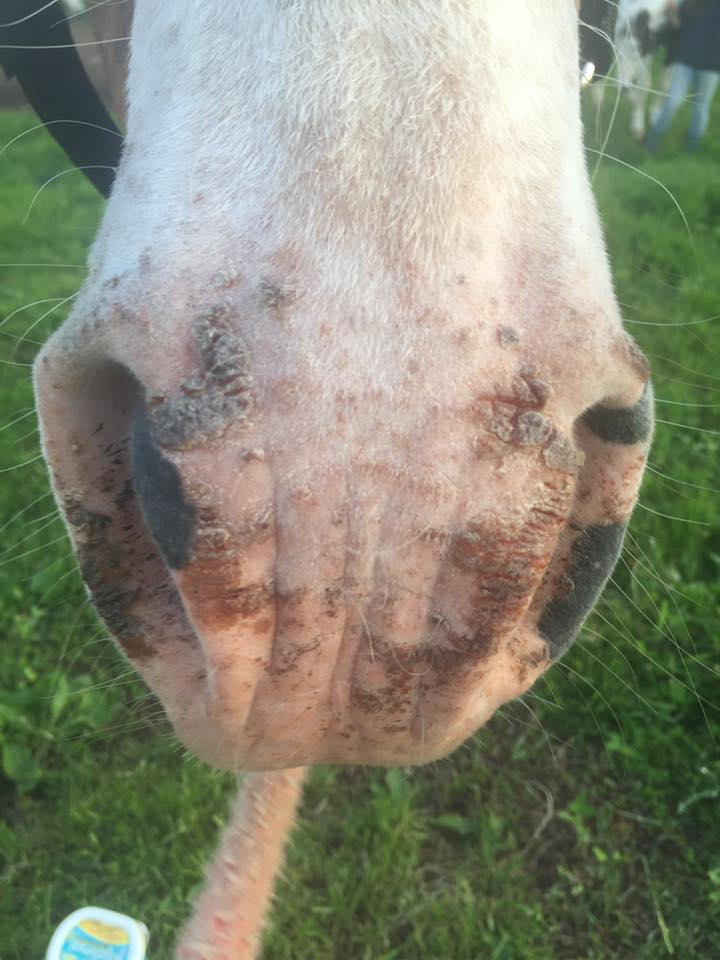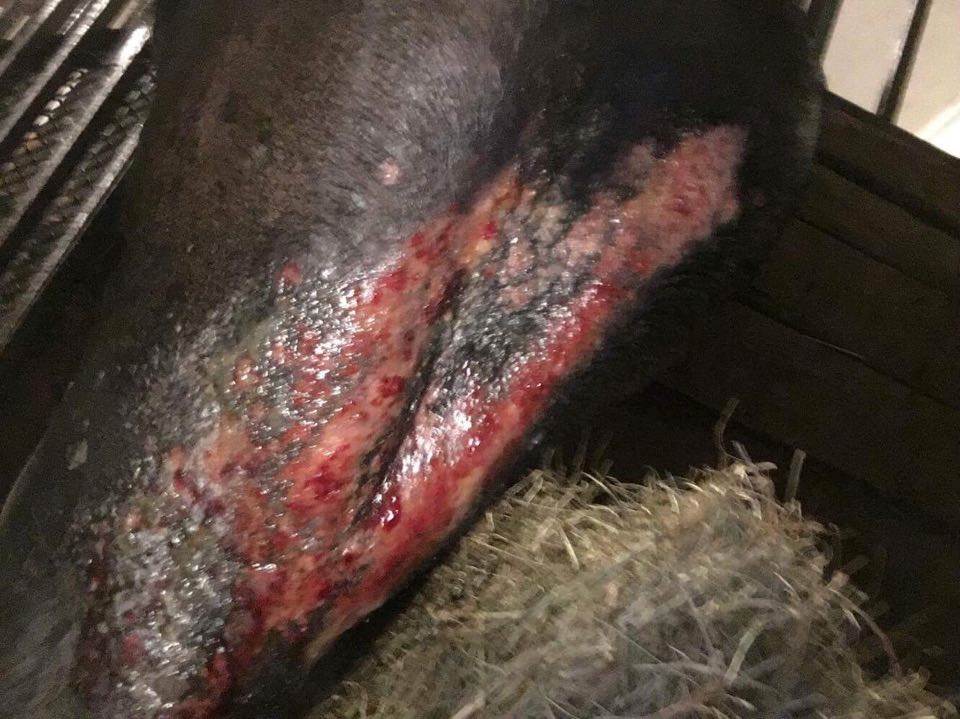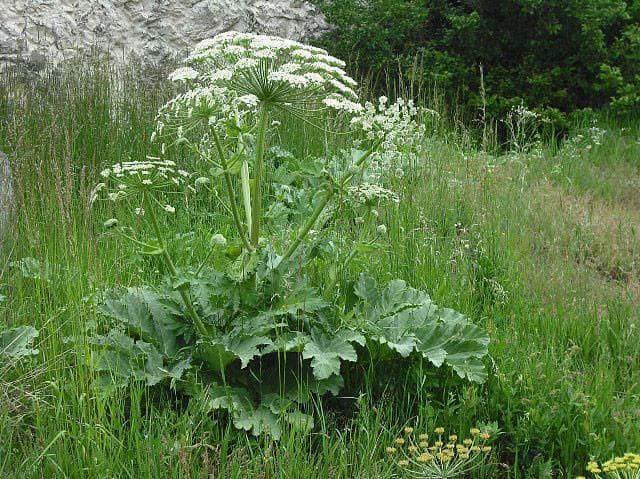


Photosensitization in horses: an often overlooked danger –
Plants that can cause burns
It is common to mistake certain skin lesions in horses for simple sunburn. However, when a horse's pink nose or stockings suddenly become covered in scabs, peeling skin, or more or less extensive wounds, it is often a case of photosensitization.
This phenomenon is caused by certain plants known as photosensitizing or phototoxic. Contact with their sap or ingestion can cause serious skin reactions in both animals and humans.
How does this manifest itself?
In horses, the first signs often go unnoticed. The danger usually occurs after the animal has brushed against a plant without showing any immediate signs. The sap deposited on the skin only reveals its danger upon subsequent exposure to the sun. This is when lesions appear: burns, scabs, blisters, etc.
In rare cases, ingestion of these plants can cause not only skin damage, but also liver or neurological disorders.
Plants at risk
Among the main photosensitizing plants, we find:
Giant Hogweed
Wild Parsnip
St. John's Wort
Groundsel (not in Quebec)
These plants are found in many regions. Here, for example, is a picture of Giant Hogweed, which is also very dangerous to humans, as it can cause severe burns upon contact.
Caution: Never attempt to pull these plants with your bare hands. Check with your local council for the correct procedure.
Each region has its own flora, and therefore its own risks. Not all horses will necessarily be affected; some are more cautious or simply luckier.
Why does this happen after sun exposure?
With plants like giant hogweed, St. John's wort, or wild parsnip, the reaction doesn't always occur immediately. It's only a few days later, after exposure to the sun, that the burns appear. Hence the name photosensitizing plants. These lesions are often mistaken for sunburn.
In humans, the sap can cause painful blisters, and contact with the eyes can even lead to blindness. The itching often encourages scratching, which worsens the lesions.
How to relieve these burns in horses?
Photosensitivity burns can occur anywhere on the body, not just the nose, nostrils, or throat. As a first aid treatment, to quickly relieve the pain, prepare a clay paste with External Clay:
Mix green clay powder with water to obtain a soft and fairly clear paste.
Apply a thin layer directly to the burn
The clay will soothe the pain, cool the area, protect against infection and promote healing.
Personally, having already suffered a third-degree burn on my hand, I can confirm the soothing effectiveness of this method. Contrary to popular belief, avoid cold water, which can aggravate the pain.
When it's time to remove the clay, use a sponge soaked in warm water to gently re-moisten the poultice. Don't try to remove it all if it resists; a new, thin layer can simply be applied.
Prevention: your best ally
Keep a bag of powdered green clay in your first aid kit.
Avoid sun exposure until the lesions are completely healed – and even for several months afterward.
Encourage nighttime grazing during convalescence and several weeks after healing.
To protect sensitive or pink noses, you can regularly apply a light poultice of green clay or a zinc-based cream (like those used for babies).
A concrete example of natural healing
We had the example of a horse treated solely with green clay as a poultice. Antibacterial and antiseptic, it was used for five days until the inflammation reduced. Then, aloe vera gel was added to complete the healing.
You can find photos of this healing on the Facebook page Clay for horses and animals.
Stay vigilant
Regularly inspect your pastures and identify any toxic plants present in your area. Eliminating them is not always easy or safe. Don't hesitate to seek professional advice.
Contrary to popular belief, a horse does not always know what is good or bad for him. Our horses are no longer in the wild at all and their instincts may not be as developed. Thus, it is possible that he rubs himself against or ingests a toxic plant.
Conclusion: as always, before treatment, focus on prevention and monitor your pastures.
A little vigilance and good preparation can prevent a lot of suffering for your four-legged friends.

